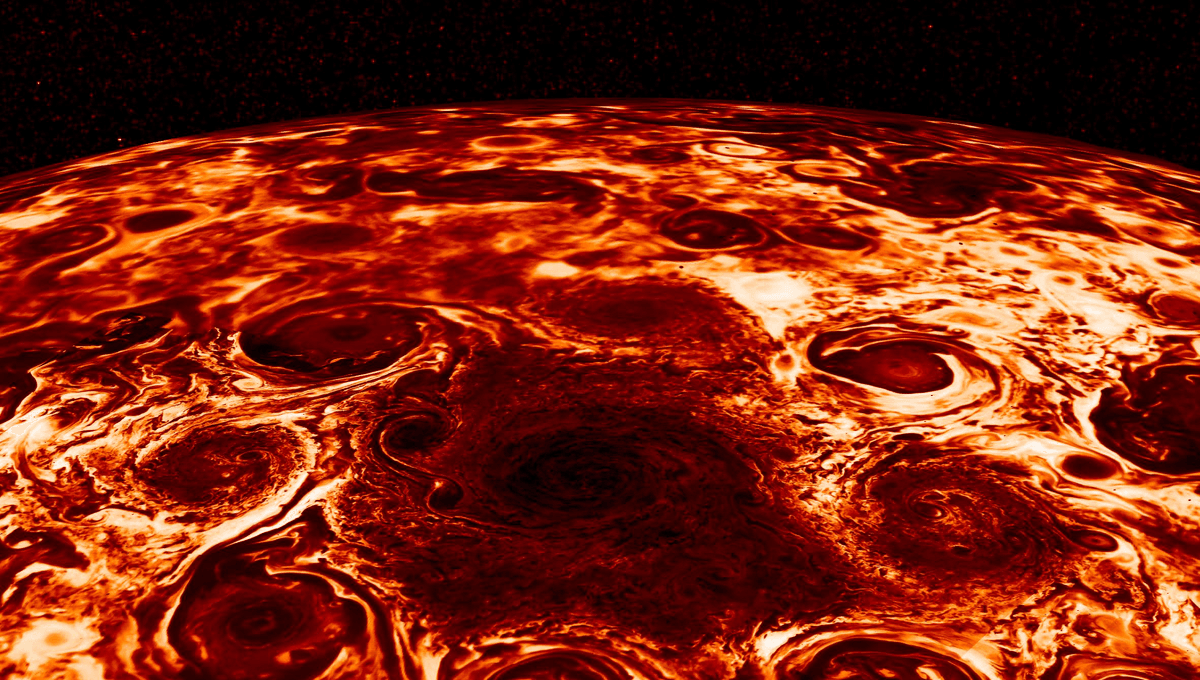
Planetary scientists using NASA’s Juno spacecraft, which is currently orbiting Jupiter, have reported the discovery of a new type of plasma phenomenon. It appears that around the north pole of the gas giant planet there is “underdense” plasma that is behaving in a way that has not been seen elsewhere. The cause of these waves is believed to be high-energy particle beams first discovered nine years ago.
Jupiter is not just the largest planet in the Solar System; it is a powerhouse when it comes to its magnetic field. It is between 16 and 54 times stronger than Earth’s own, and the magnetosphere of the planet is the largest continuous structure in the Solar System apart from the sphere of influence of the Sun. It extends for over 3 million kilometers (2 million miles) in a sunward direction, and away from the Sun almost to the orbit of Saturn.
It is a complex environment. There’s the stream of charged particles from the Sun (the solar wind), volcanic eruptions from the active moon Io, as well as interactions with its icy moons Europa and Ganymede. Ganymede is the only moon in the Solar System with a magnetic field. From these extreme combinations, powerful ultraviolet and X-ray aurorae take place on the planet.
Plasma is the fourth state of matter, made of a fluid of charged particles. Despite being rare in our day-to-day life made of solids, gases, and liquids, plasma is the most common state of matter in the universe. Plasma is being thrown from the Sun as solar wind, and that is how aurorae on Earth are caused. Electrons surf magnetic plasma waves known as Alfvén waves, where the plasma oscillates perpendicularly to the magnetic field lines. That’s how they are accelerated before slamming into the atmosphere.
There are also Alfvén waves on Jupiter; but thanks to Juno’s analysis, researchers worked out that these waves transition to something called a Langmuir wave, where the plasma oscillates parallel to the magnetic field.
The team found that there is highly magnetized low-density plasma, which behaves as a combination of Alfvén and Langmuir modes. These waves are generated by electron beams moving upwards from the planet, something that Juno observed from its earliest observations when it got to the planet nine years ago.
The study is published in Physical Review Letters.
Source Link: New Plasma Waves Over Jupiter’s North Pole Have Never Been Seen Before In The Solar System